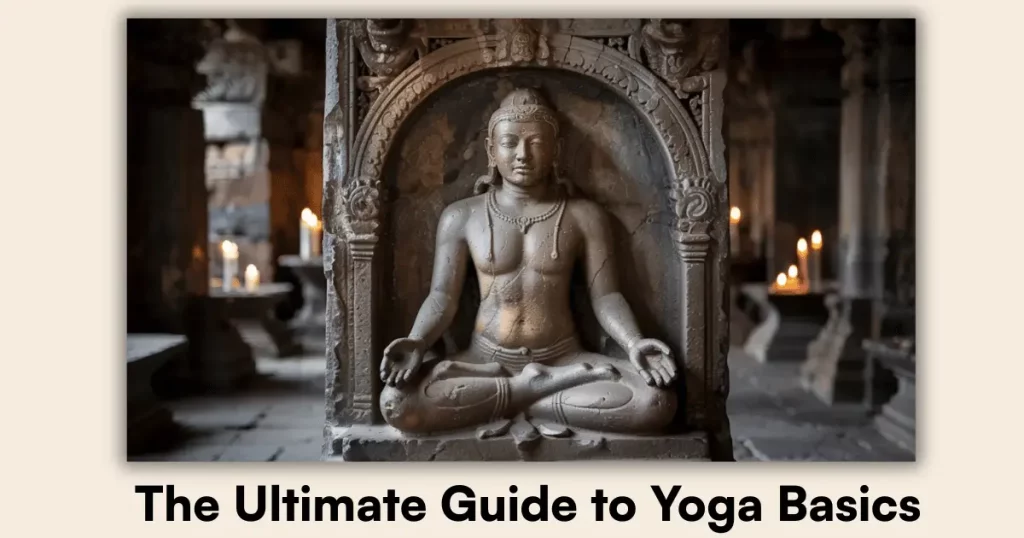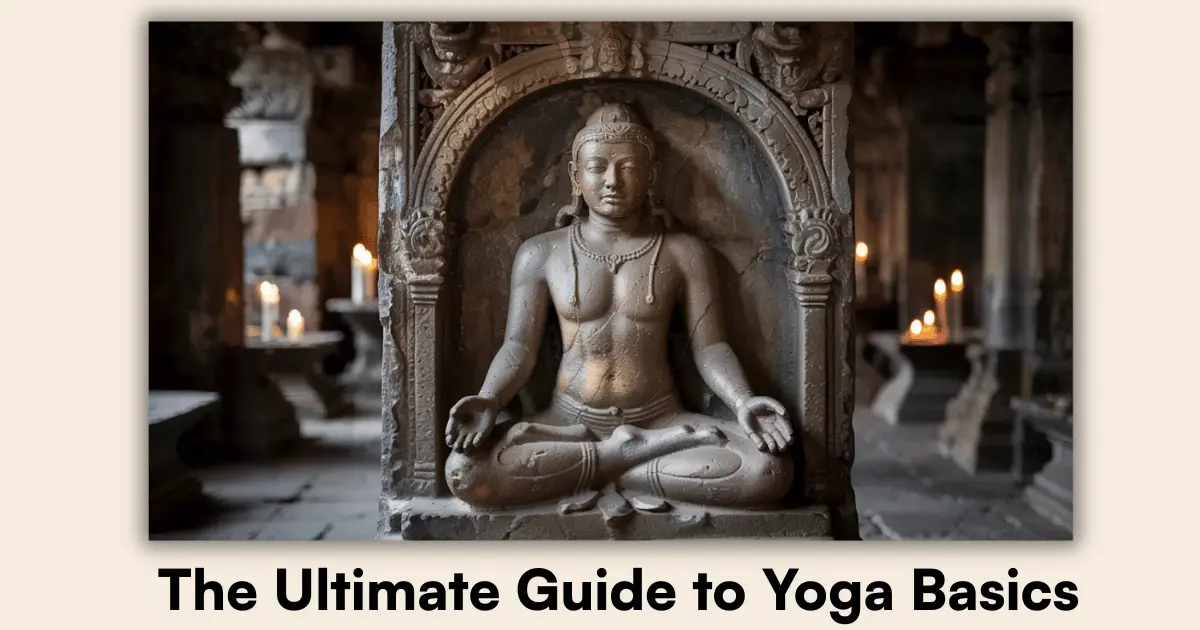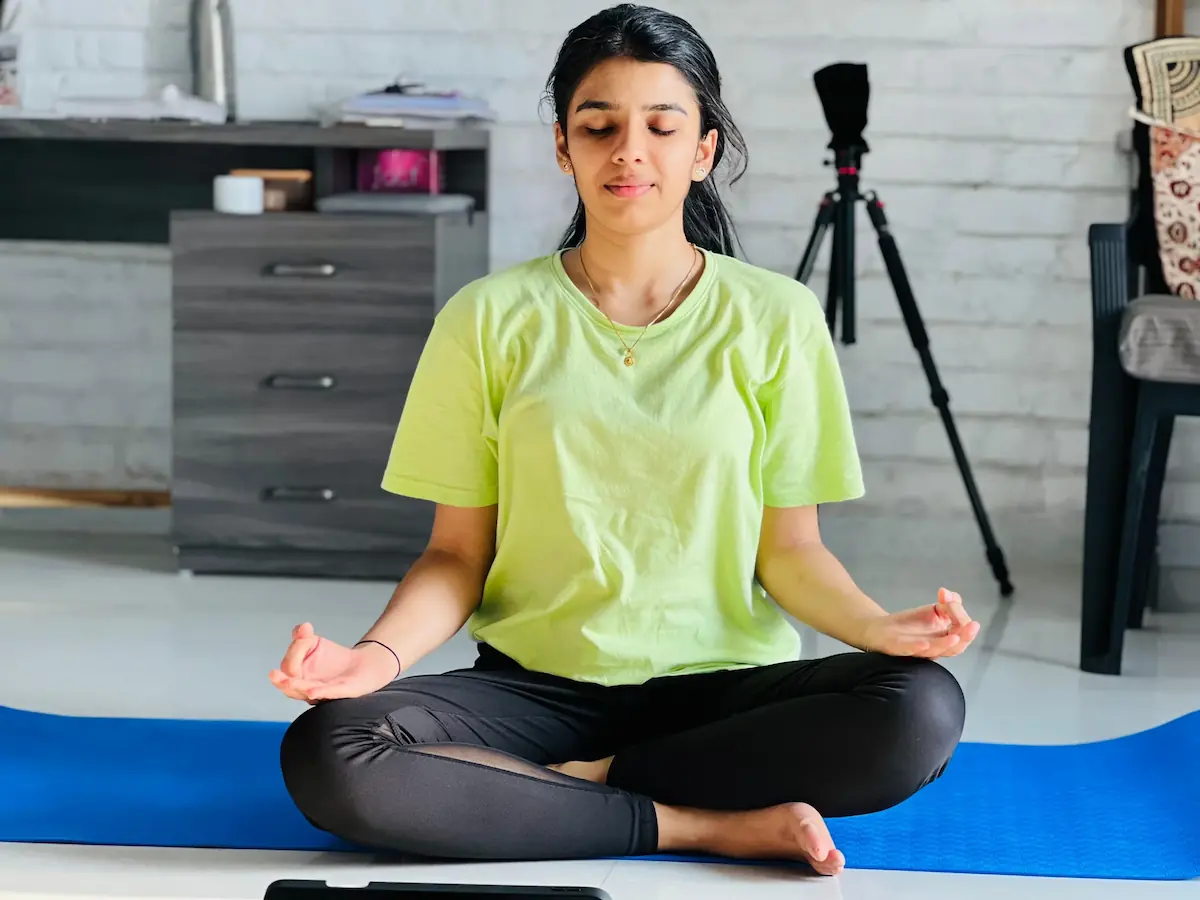Did you know that over 36 million Americans practice yoga, drawn by its promise of physical vitality and mental peace? If you’re new to yoga, the idea of twisting into pretzel-like shapes or chanting “Om” might feel intimidating—but it doesn’t have to be. Yoga is for everyone, and this guide is here to break it down for beginners, stripping away the mystery and giving you a clear, actionable starting point.
Whether you’re curious about what yoga really is, eager to unlock its benefits, or ready to try your first pose, this ultimate guide has you covered. We’ll take you through yoga’s fascinating history, explore why it’s worth starting, teach you essential beginner poses, and show you how to kick off your practice with confidence. Think of this as your go-to resource for all things yoga basics—a one-stop shop to help you step onto the mat with ease.
Expect practical tips, simple explanations, and a sprinkle of inspiration to keep you motivated. Bookmark this page, because it’s packed with insights you’ll want to revisit as you grow. Ready to discover why yoga for beginners is more than just stretching? Let’s dive in.

What Is Yoga? A Quick History and Overview
Yoga is more than a workout—it’s a mind-body practice that weaves together physical poses (asanas), controlled breathing (pranayama), and meditation to create balance and harmony. At its core, yoga is about connection: uniting body, mind, and spirit. But where did this transformative practice come from?
Yoga’s roots stretch back over 5,000 years to ancient India. Early evidence appears in sacred texts like the Vedas, but it was the sage Patanjali who codified yoga around 200 BCE in his Yoga Sutras. This foundational text outlined an eight-limbed path to enlightenment, with physical postures as just one piece of the puzzle. Originally, yoga was a spiritual discipline aimed at liberation, practiced by ascetics in pursuit of inner peace.
Fast forward to today, and yoga has evolved into a global phenomenon. In the 20th century, teachers like Krishnamacharya and Swami Sivananda brought yoga to the West, blending traditional practices with modern fitness. Now, yoga studios dot city streets, and online classes make it accessible to all. While its spiritual essence remains, modern yoga often emphasizes physical and mental wellness—perfect for beginners seeking a healthier lifestyle.
So, what is yoga in today’s world? It’s a versatile practice that meets you where you are, whether you’re chasing flexibility or calm. For a deeper dive into its meaning, check out “What Is Yoga? A Beginner’s Guide.”
Why Start Yoga? Benefits for Beginners
Why do yoga? For beginners, the answer lies in its incredible range of benefits—physical, mental, and emotional—that don’t require prior experience or athletic prowess. Yoga is approachable, adaptable, and packed with rewards.
Physically, yoga builds a stronger, more flexible body. Poses like Downward-Facing Dog stretch tight muscles, while Warrior I strengthens legs and core. Studies, like those from the American Osteopathic Association, show yoga improves posture and reduces back pain—great news if you sit all day. Over time, you’ll notice better balance and coordination, too.
Mentally, yoga is a stress-busting powerhouse. Research, including a 2018 study in the Journal of Clinical Psychiatry, found yoga reduces cortisol (the stress hormone), promoting relaxation and focus. Pair this with mindfulness from breathing exercises, and you’ve got a recipe for sharper concentration and emotional resilience. Beginners often report sleeping better and feeling less overwhelmed—a win for busy lives.
What makes yoga so beginner-friendly? It’s low-impact and scalable. You don’t need to be fit or flexible to start—just willing. Whether you’re 20 or 70, yoga adjusts to your level, offering modifications for every pose. Plus, the sense of accomplishment from holding Tree Pose for a few seconds is a confidence boost anyone can enjoy.
The science backs it up, but the real magic is in the experience: yoga feels good. Curious how it lifts your mood? Explore “How Yoga Improves Mental Health” for more.
Essential Yoga Poses for Beginners
Poses are the heart of yoga basics, and for beginners, they’re the perfect entry point. They build strength, flexibility, and awareness—plus, they’re fun to learn. Here are seven foundational poses with simple instructions, benefits, and tips to get you started.
- Mountain Pose (Tadasana)
How: Stand tall, feet together, arms relaxed. Lift your chest, roll shoulders back, and root down through your feet.
Why: Improves posture and grounds you.
Tip: Imagine a string pulling you up from the crown of your head. - Downward-Facing Dog (Adho Mukha Svanasana)
How: Start on hands and knees, lift hips up and back, forming an inverted V. Keep knees slightly bent if hamstrings are tight.
Why: Stretches the whole body—hamstrings, shoulders, calves.
Tip: Focus on lengthening your spine over straightening your legs. - Child’s Pose (Balasana)
How: Kneel, sit back on heels, then fold forward, resting your forehead on the ground and arms by your sides or extended.
Why: Calms the mind and stretches hips.
Tip: Use a pillow under your chest if it’s hard to relax. - Cat-Cow Pose (Marjaryasana-Bitilasana)
How: On all fours, arch your back up (Cat) while tucking your chin, then dip your belly down (Cow) while lifting your gaze. Flow between them.
Why: Warms up the spine and boosts mobility.
Tip: Sync your breath—inhale for Cow, exhale for Cat. - Warrior I (Virabhadrasana I)
How: Step one foot back, bend the front knee, and lift arms overhead. Keep hips square.
Why: Strengthens legs and opens the chest.
Tip: If balance wobbles, shorten your stance. - Tree Pose (Vrksasana)
How: Stand on one leg, place the other foot on your inner thigh or calf (not knee), hands at heart or overhead.
Why: Enhances balance and focus.
Tip: Gaze at a fixed point to steady yourself. - Corpse Pose (Savasana)
How: Lie flat on your back, arms relaxed, palms up. Close your eyes and breathe deeply.
Why: Promotes total relaxation and integration.
Tip: Stay for a few minutes to soak it in.
Start with these easy yoga poses, focusing on alignment over perfection. Modify as needed—blocks or a wall can help. Want more? See “Essential Yoga Poses for Beginners.”
How to Start Your Yoga Practice
Ready to begin your yoga journey? Starting a home yoga practice is simpler than you think. With the right mindset and setup, you’ll be flowing in no time.
First, adopt a beginner’s mindset: patience beats perfection. Yoga isn’t about nailing every pose—it’s about showing up consistently. Even five minutes a day builds a habit. Let go of comparison; your practice is yours alone.
Next, create your space. Find a quiet corner, clear of clutter, with room to move. A yoga mat is ideal (non-slip, cushioned), but a towel works too. Props like blocks or a strap (or books and a belt) can support poses—handy for tight spots. Dim lights or add a candle if it helps you unwind.
Try this simple beginner routine: Start with Cat-Cow to warm up, flow into Downward-Facing Dog for a stretch, then rest in Child’s Pose. Finish with Corpse Pose to relax. Breath is key—inhale deeply, exhale fully.
Need guidance? Free resources abound. “Yogaradhna” on YouTube offers beginner-friendly flows, while apps like Down Dog let you customize sessions. Local classes are great too, but home practice keeps it low-pressure.
Consistency is your superpower. Start small, celebrate progress, and watch yoga become a natural part of your life. For more tips, visit “How to Start a Yoga Practice at Home.”
🧘 Ready to Take Your Practice Further?
Meditation is a great start—but combining it with movement brings even more balance and clarity. If you’re in Ahmedabad, join us for expert-led yoga and meditation sessions designed to energize your body and calm your mind.
🌟 Book Your First Yoga Class NowFinal Words
Yoga for beginners is a journey, not a race. It’s about discovering what feels right for your body and mind, one breath at a time. This guide gives you the tools to start—history to inspire you, benefits to motivate you, poses to practice, and steps to begin.
Now it’s up to you: unroll that mat, take a deep breath, and embrace the calm strength yoga brings. You’ve got this.
FAQs
Q: Do I need to be flexible to start yoga?
A: No! Yoga builds flexibility over time. Start where you are, and use modifications like bending your knees or using props.
Q: How often should beginners practice yoga?
A: Aim for 2–3 times a week, even if it’s just 10–15 minutes. Consistency matters more than duration.
Q: What do I need for a home yoga practice?
A: A mat, comfortable clothes, and a quiet space are enough. Optional props like blocks or a strap can help, but they’re not essential.
Q: Can yoga help with stress?
A: Yes, studies show yoga lowers stress hormones and promotes relaxation. Poses like Child’s Pose and mindful breathing are especially calming.
Q: How long does it take to see yoga benefits?
A: Many notice improved mood and energy within weeks. Physical changes like flexibility or strength may take a few months with regular practice.


3 thoughts on “The Ultimate Guide to Yoga Basics: Everything Beginners Need to Know”